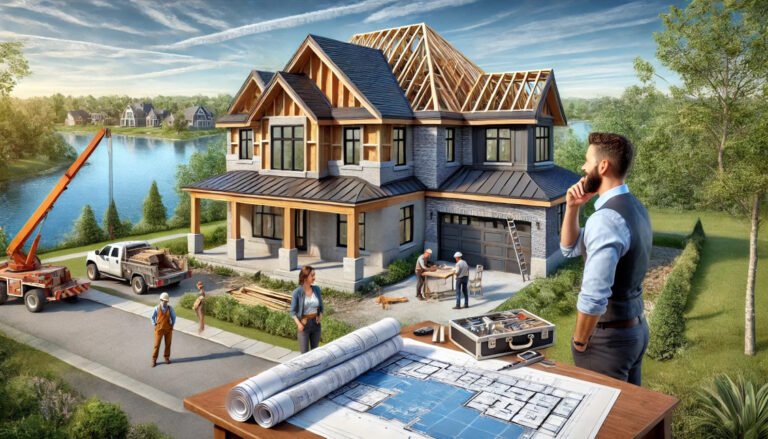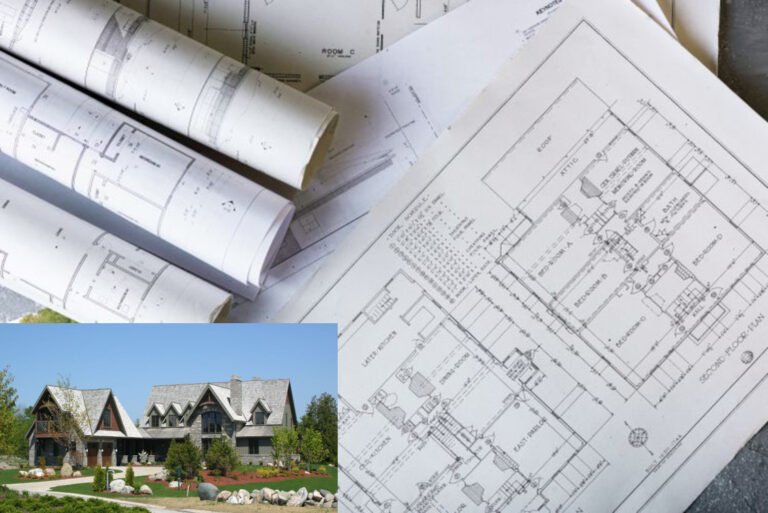ICFPro.ca is a division of ICFhome.ca - Phone 1 866 868-6606 - Direct Line 1 705 533-1633 - Email: info@icfhome.ca
ICF Thermal Insulation

ICF Thermal Insulation: Building Comfort, Saving Energy, and Defying Mother Nature’s Curveballs
By Harvey Juric, ICFHome.ca
=====
Introduction: Why Your Grandkids Will Thank You for Choosing ICF
Let’s face it: building a house is like adopting a high-maintenance pet. It eats your money, demands constant attention, and occasionally keeps you up at night with mysterious creaks. But unlike Fluffy the French Bulldog, your house can be engineered to outlive you—and even cut your grandkids’ energy bills. Enter Insulated Concrete Forms (ICF), the unsung hero of modern construction. If wood-framed homes are the flip phones of housing, ICF is the smartphone: smarter, sturdier, and far less likely to crack under pressure.
ICF isn’t just about stacking foam blocks and pouring concrete. It’s about creating a fortress that laughs at winter drafts, shrugs off summer heatwaves, and survives the teenage years of your HVAC system. But before we dive into the nitty-gritty of thermal resistance and humidity wars, let’s address the elephant in the room: Why does your brand-new house sound like a bowl of Rice Krispies at 3 a.m.? Spoiler: ICF won’t solve all your problems—but it’ll sure make them quieter.
=====
The R-Value Revolution: Or, How to Make Heat Waves Jealous
If you’ve ever worn a down jacket in a snowstorm, you understand the concept of R-value—the measure of insulation’s ability to resist heat flow. Wood framing? That’s your threadbare sweater. ICF? That’s the Arctic expedition-grade parka. While traditional homes boast R-13 walls (if you’re lucky), ICF walls pack a punch with R-22 to R-26, thanks to two continuous layers of Expanded Polystyrene (EPS) foam sandwiching a concrete core.
But here’s the kicker: R-value alone is like judging a cake by its frosting. Wood framing’s “R-13” is a lie your builder tells you at closing. Why? Because studs, gaps, and thermal bridges (imagine heat escaping through wooden ribs) slash real-world performance by 50%. ICF, on the other hand, is the overachiever who actually does the group project. Its seamless foam layers and concrete mass create a thermal barrier so stubborn, even your thermostat will get bored.
=====
Thermal Mass: The Concrete “Battery” That Outsmarts the Sun
Concrete isn’t just for sidewalks and regrettable basement renovations. In an ICF home, it’s the ultimate thermal battery. Picture this: On a scorching summer day, your walls absorb heat like a sponge, storing it until nighttime when temperatures drop. Then, like a considerate roommate, they release it back outdoors. In winter, the same walls hoard warmth from sunlight or your furnace, keeping rooms cozy without cranking the heat.
Wood framing? It’s the guy who forgets his lunch at home. With near-zero thermal mass, wood can’t store heat—so your HVAC system works overtime, and your energy bill looks like a phone number. ICF’s concrete core smooths out temperature swings, turning your home into a climate-controlled sanctuary. Bonus: If the apocalypse hits, you can probably survive in your ICF bunker. Just sayin’.
=====
Airtightness: Because Drafts Are Just Uninvited Guests
Ever felt a chilly breeze in your living room and wondered if your walls were built by a colander? Traditional homes leak air like a screen door on a submarine. The industry measures this betrayal with “ACH50”—air changes per hour at 50 pascals of pressure. A new wood home scores 1.75–3 ACH50. After a few years? Let’s just say it’s easier to list what doesn’t leak.
ICF laughs in the face of ACH50. With airtight foam panels and a concrete core, most ICF homes hit 0.5–2.5 ACH50. Translation: Your indoor air stays put, drafts are exiled, and your energy bills nosedive. But there’s a catch: Airtightness requires mechanical ventilation (think heat recovery ventilators) to avoid turning your home into a stale-air terrarium. Pro tip: Pair this with a humidity monitor. Your hardwood floors will thank you.
=====
Humidity: The Silent Saboteur (and How ICF Tames It)
Humidity is the frenemy of every homeowner. Too much? Your windows sweat, mold throws a house party, and your doors swell shut. Too little? Your skin turns into parchment, and your hardwood floors crack like a dry lakebed. Traditional wood homes are humidity’s favorite playground. As lumber expands and contracts, you get squeaky floors, popped nails, and cracks that make your walls look like a spiderweb convention.
ICF sidesteps this drama. Concrete doesn’t swell or shrink with moisture, and EPS foam laughs at humidity. While wood framing warps like a forgotten grocery store cucumber, ICF walls stay rigid. But don’t get cocky—ICF won’t fix your indoor pool-level humidity. Invest in a humidifier/dehumidifier combo and aim for 35–60% humidity. Your nose, furniture, and sanity will stay intact.
=====
The Fireproof Fortress: Where ICF Meets the Dragon
Let’s talk about fire. Wood homes burn. It’s science. ICF homes? They’re the firefighters of the housing world. EPS foam melts instead of burning (thanks to flame retardants), and concrete? It’s basically a rock. During wildfires or rogue kitchen experiments gone wrong, ICF walls slow flames long enough for you to grab the photo albums and GTFO.
Insurance companies love this. ICF homes often snag lower premiums because they’re 10x stronger than wood frames and survive hurricanes, tornadoes, and that one neighbor who insists on DIY fireworks. Fun fact: The military uses ICF for blast-resistant buildings. If it’s good enough for Uncle Sam’s bunkers, it’s good enough for your man cave.
=====
The Eco-Warrior’s Dilemma: Concrete vs. Trees
“But wait!” cries the environmentalist. “Concrete production emits CO2!” True—but let’s zoom out. A single ICF home saves ~110 tons of CO2 over 100 years by slashing energy use. Plus, concrete often includes recycled fly ash or slag, and steel rebar is infinitely recyclable. Compare that to wood framing, which requires clear-cutting forests and offers a lifespan shorter than a TikTok trend.
ICF also sidesteps the “shrinkage saga” plaguing wood homes. Green lumber dries, twists, and cracks, while ICF stays put. Translation: Fewer callbacks for builders, fewer headaches for you. And when (if) your ICF home ever gets demolished, the concrete can be crushed for roads, and the foam recycled—though we’re still working on making EPS recycling as common as coffee shops.
=====
The Cost Conundrum: Pay Now, Save Later
ICF isn’t cheap—it costs 3–5% more upfront than wood framing. But let’s do the math: Over 30 years, you’ll save 20–40% on energy bills. Add in lower insurance premiums, near-zero maintenance, and a 100-year lifespan, and ICF pays for itself faster than a Netflix subscription.
Still skeptical? Compare it to buying a diesel truck versus a hybrid. One guzzles cash; the other sips it. Plus, resale value? ICF homes sell faster than ice cream trucks in July. Buyers love the words “hurricane-proof” and “heating bill: $50.”
=====
The Final Word: Building for the Next Century
Look, no house is perfect. ICF won’t stop your teenager from blasting death metal at midnight, and yes, you’ll still get the occasional hairline crack as the earth settles. But unlike wood homes—which age like milk—ICF matures like fine wine. It’s quieter, safer, and tougher than anything else on the block.
So, when your neighbor’s siding flies off in a storm, or their energy bill hits three digits, smile knowingly. You’ve got a home that’s ready for climate change, zombie apocalypses, and whatever else the 21st century throws at it.
Congratulations on joining the ICF revolution.
May your walls be warm, your air clean, and your utility bills hilariously low.
Sincerely,
The Crew: Kevin, Mauricio, Ty, Pat, John, and Harvey
ICFHome.ca – Building Tomorrow’s Homes, Today.
=====
References & Further Reading
- Cement Association – ICFs: Energy Efficiency in Action
- Quad-Lock Building Systems – Thermal Performance of ICF Walls
- U.S. Department of Energy – Airtightness and Indoor Air Quality
- NRMCA – Concrete’s Role in Sustainable Construction



